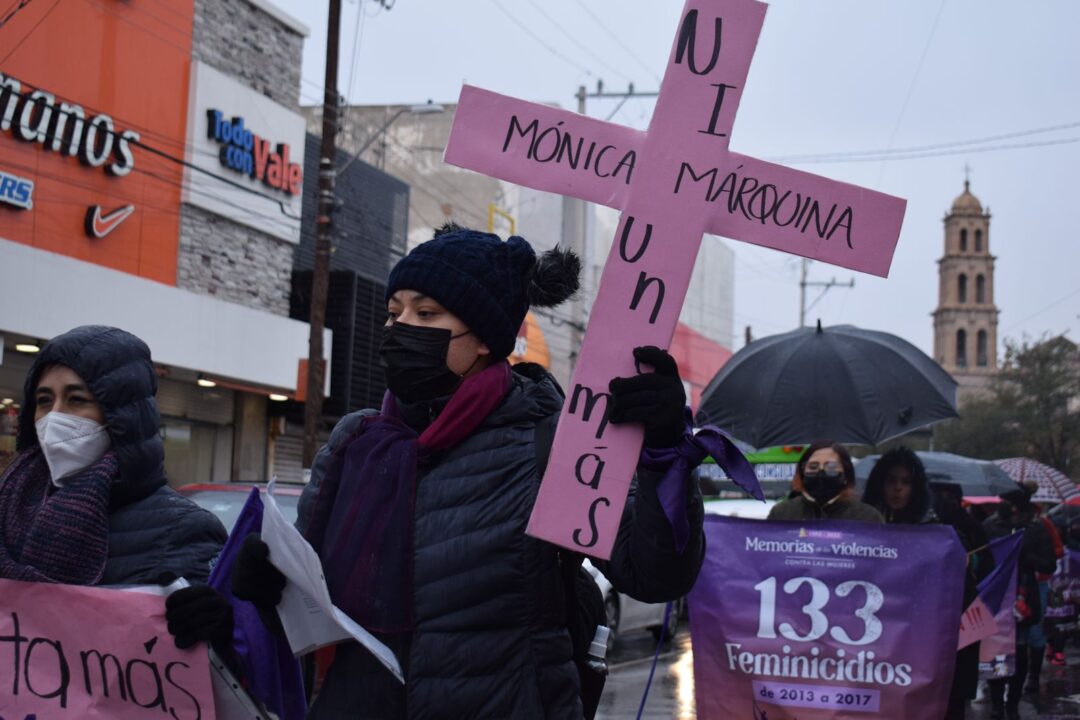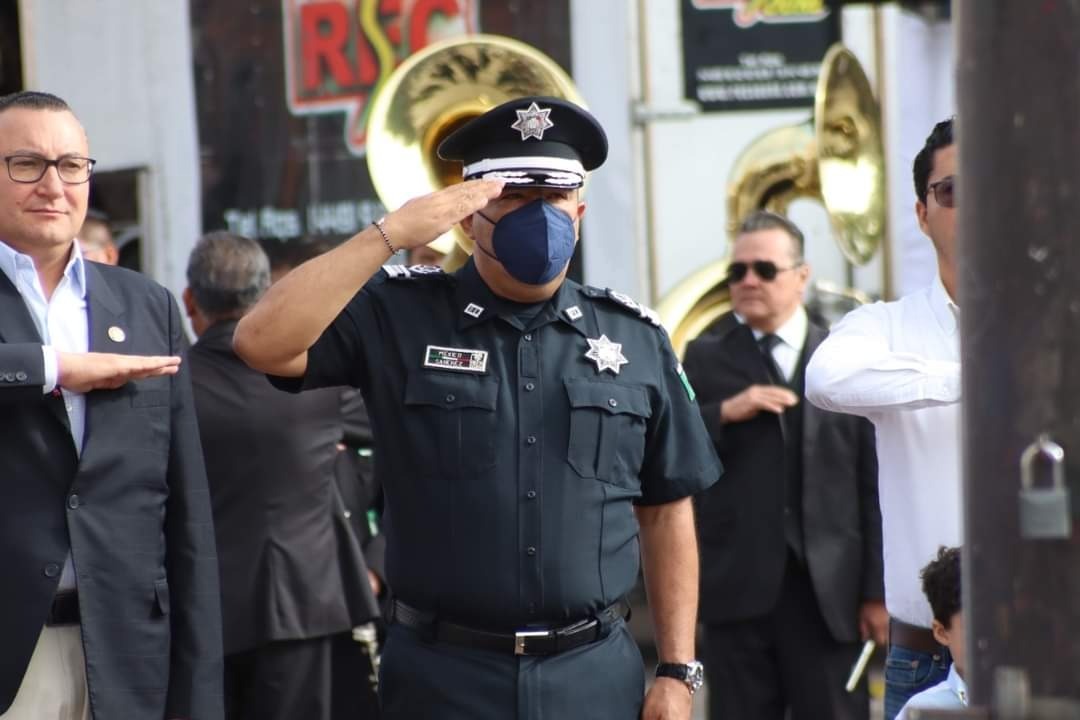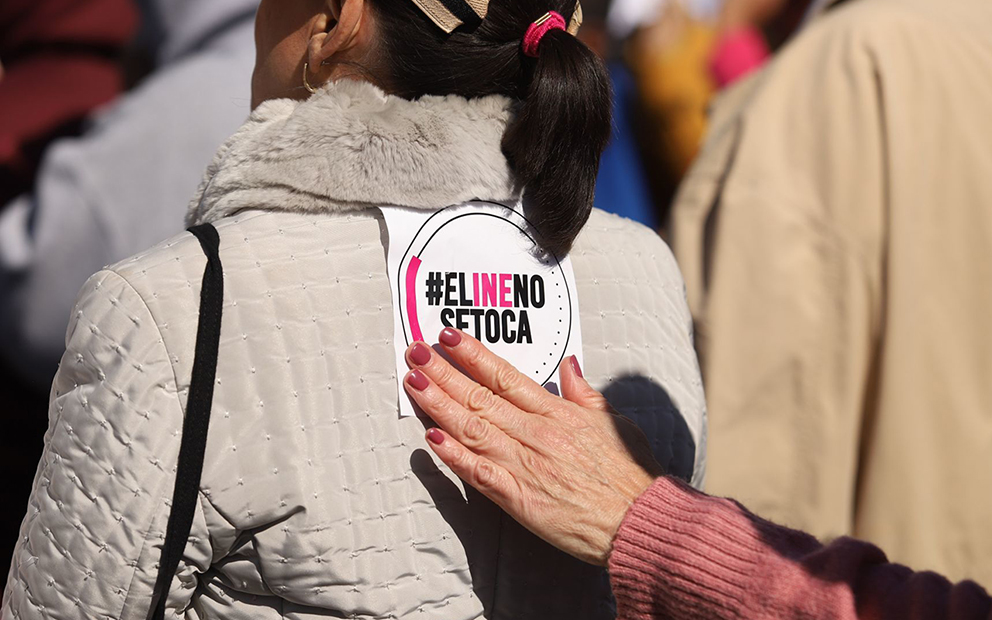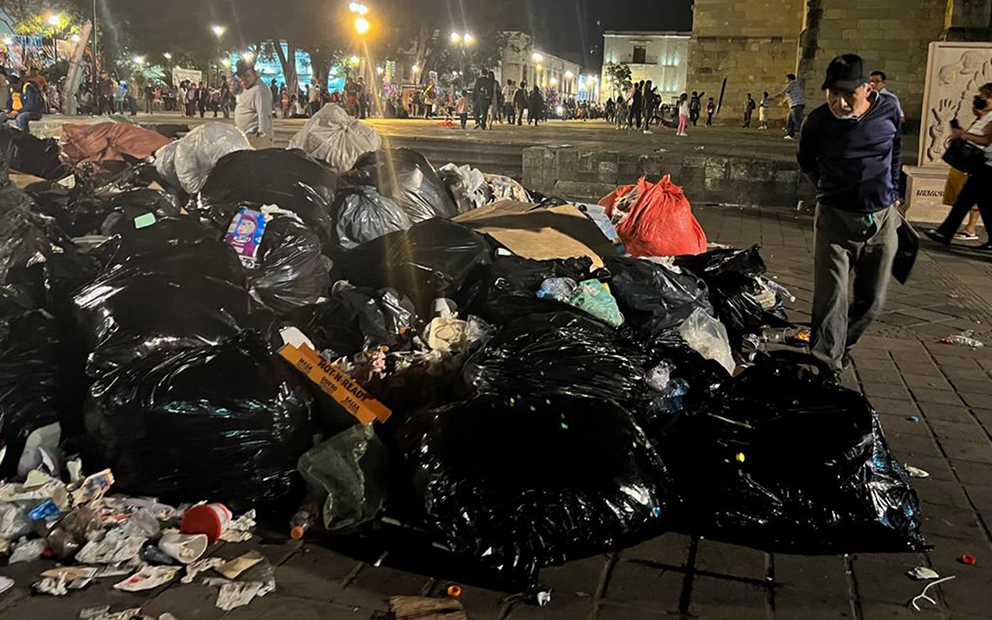Searching, we find ourselves: snapshots from the Sixth National Search Brigade in Morelos
25 febrero, 2022
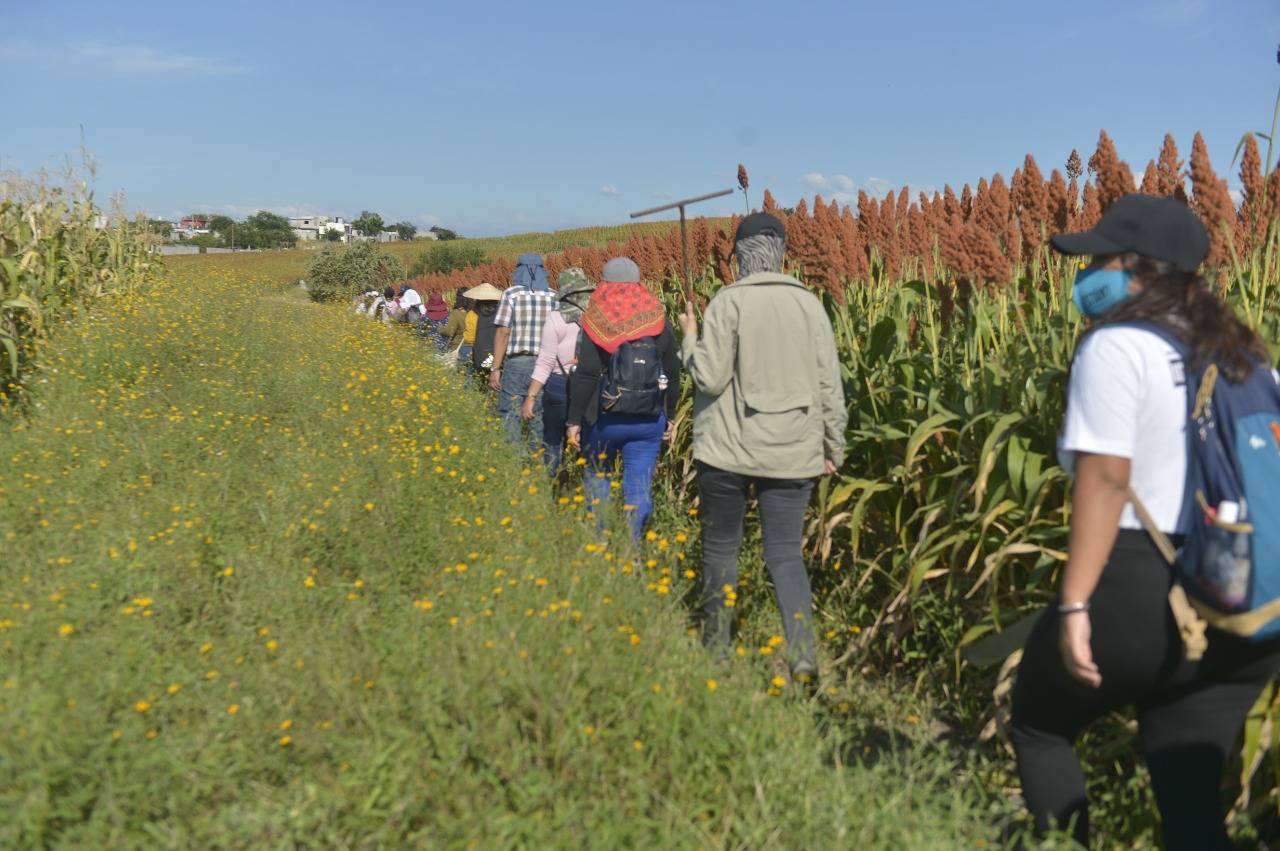
In a country with almost 100,000 disappeared persons, search brigades are a light in the darkness. The International Search Brigade, composed of families from several countries whose loved ones have disappeared in Mexico, will take place from February 17 to March 4. Families will meet in the desert along the Mexico-US border. To learn a bit about what the people that work tirelessly to bring their family members home experience on these search days, the team from the project A dónde van los desaparecidos (Where Do the Disappeared Go?) compiled a record of snapshots during the Sixth National Brigade that took place in October of last year.
Text by Aranzazú Ayala, Lucía Flores, Marcos Nucamendi and Efraín Tzuc, originally published February 6, 2022 in A dónde van los Desaparecidos.
Photos by: Aranzazú Ayala, National Search Brigade, Efraín Tzuc, Lucía Flores and Marcos Nucamendi.
Translated by Elysse DaVega for Pie de Página in English.
MEXICO CITY– The hugs don’t stop. After not seeing each other for a year and a half due to COVID-19 restrictions, the searchers finally meet in Cuernavaca, Morelos. They’ve come from all over the country with one objective: walk any area that could lead to any trace or evidence– anything to help them find the people that others have forced to disappear.
It’s October 2021, and members of the Red de Enlaces Nacionales, which comprises 160 collectives of relatives of missing persons, are searching not only for their own disappeared, but for others’ as well. As part of the National Search Brigade of Missing Persons, the sixth brigade of it’s kind carried out in Mexico, they are also searching for a way to build peace in places that have been shaken by violence.
The days contradict themselves: boisterous breakfasts followed by searches in hidden graves; emotional outbursts that end in collective hugs; birthday celebrations overshadowed by disappearance anniversaries. Laughter, shouting, crying, and prayers.
This mash up of stories from the brigade seeks to highlight some of the moments that make up the collective search process.
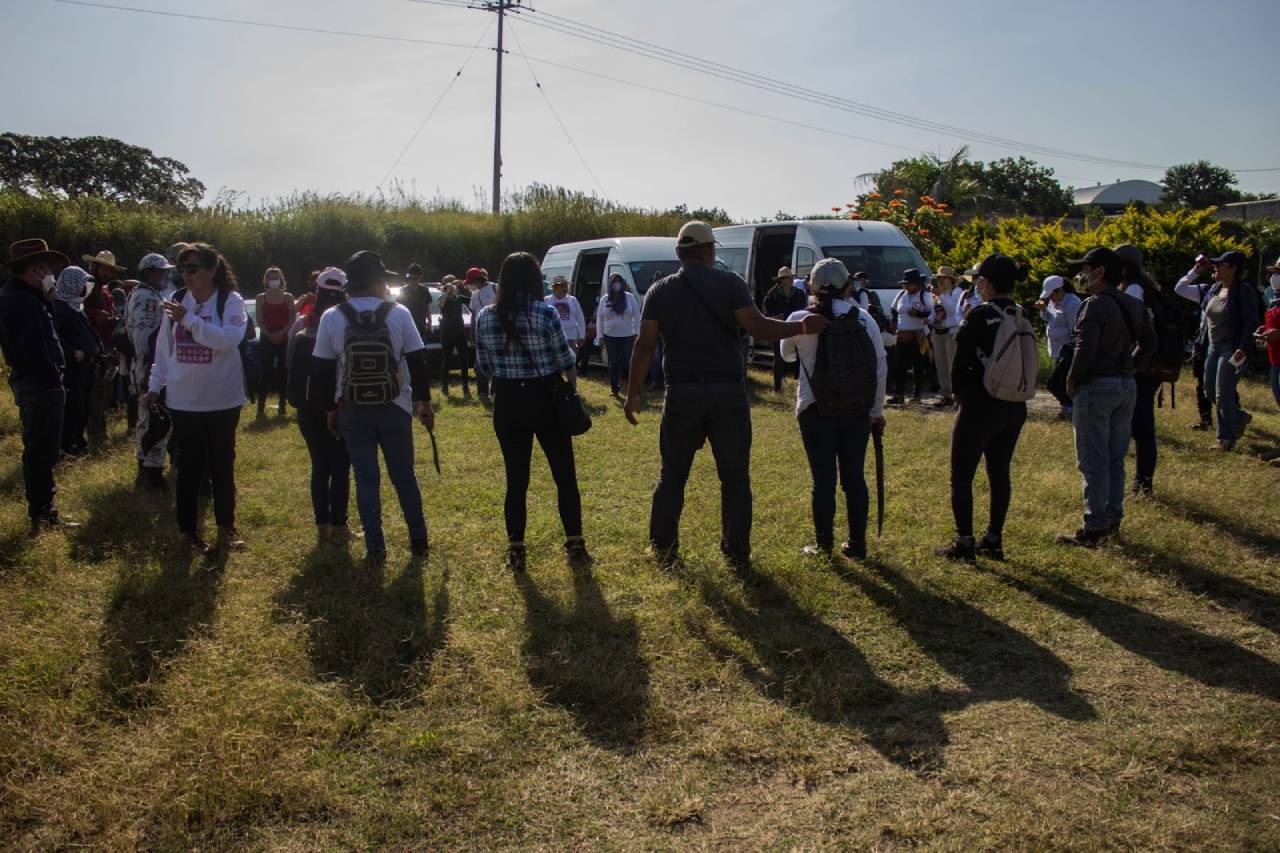
***
Saturday, October 9. Cuernavaca, Morelos. The first group of women searchers arrives at the National Brigade’s headquarters and waits for their fellow searchers to arrive. A few minutes later, someone utters the question that dominates these encounters: «Who are you looking for?»
Esperanza Sánchez from Regresando a Casa (Search to Bring Our Family Members Home), one of collectives from Morelos state that is coordinating the brigade, is the mother of Emilio Ignacio Zavala Sánchez, a man who disappeared in Oaxaca a year and a half ago. Out of the other women in this group, she’s the one that’s been searching for the shortest amount of time.
Gregoria Ortiz, «Goyita», as she likes to be called, from Pachuca, Hidalgo, has been looking for her son for more than a decade. He disappeared leaving school when he was 12 years old. Catalina Ulloa, from Chimalhuacán, from the State of Mexico, has been searching for her son Gabriel Mello for 11 years. Victoria Paz, from Iguala, Guerrero, began searching in 2013 after her husband and three of her brothers disappeared.
«We’re not as scared when we’re together. We become one,» Victoria Paz said.
Esperanza can’t hold in her tears. Catalina hugs her; one of the many hugs of consolation given and received on these search days.
***
Religious communities are a core part of the National Search Brigade. Families approach them to set up «mailboxes of peace» and invite people to leave anonymous leads that could help them find their loved ones.
On Sunday, October 11, the first such box was placed in Cuernavaca’s cathedral. That day, the church filled with around a hundred men and women with t-shirts and banners bearing photos of their disappeared family members.
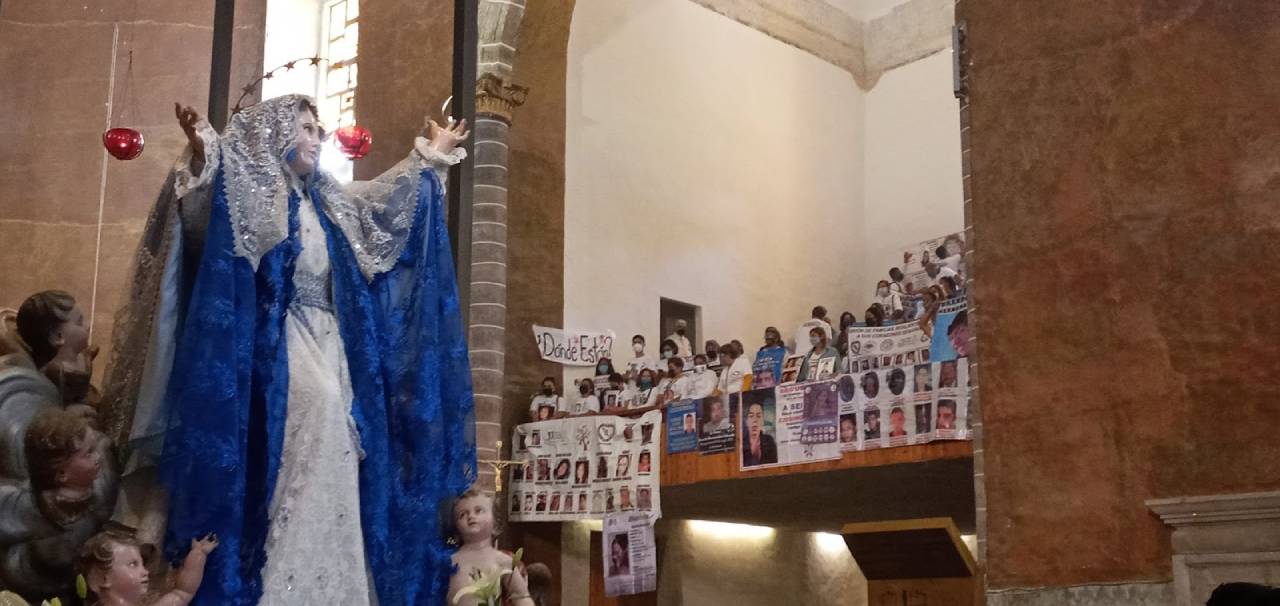
After mass, everyone marched to a memorial for victims of violence in the zócalo (central square) of Cuernavaca. The memorial was set up by the Movement for Peace with Justice and Dignity, an organization founded in 2011 and headed by the poet Javier Sicilia after the murder of his son Juan Francisco. The group brought together hundreds of victims of violence from all over the country– people like Maria Herrera, a mother of four missing children and co-founder of the brigade.
Searchers gathered at this iconic site where, a decade ago, victims of violence began to speak out; the place where thousands and thousands of people banded together to say: «We’re here, and violence is destroying us. It’s destroying this country.»
Two women walk up to the memorial and lay down photos of their missing family members. It’s almost as if this place has been feeding off of their memories and demands all along. Just a glimpse of it is a striking reminder that the country is missing so many.
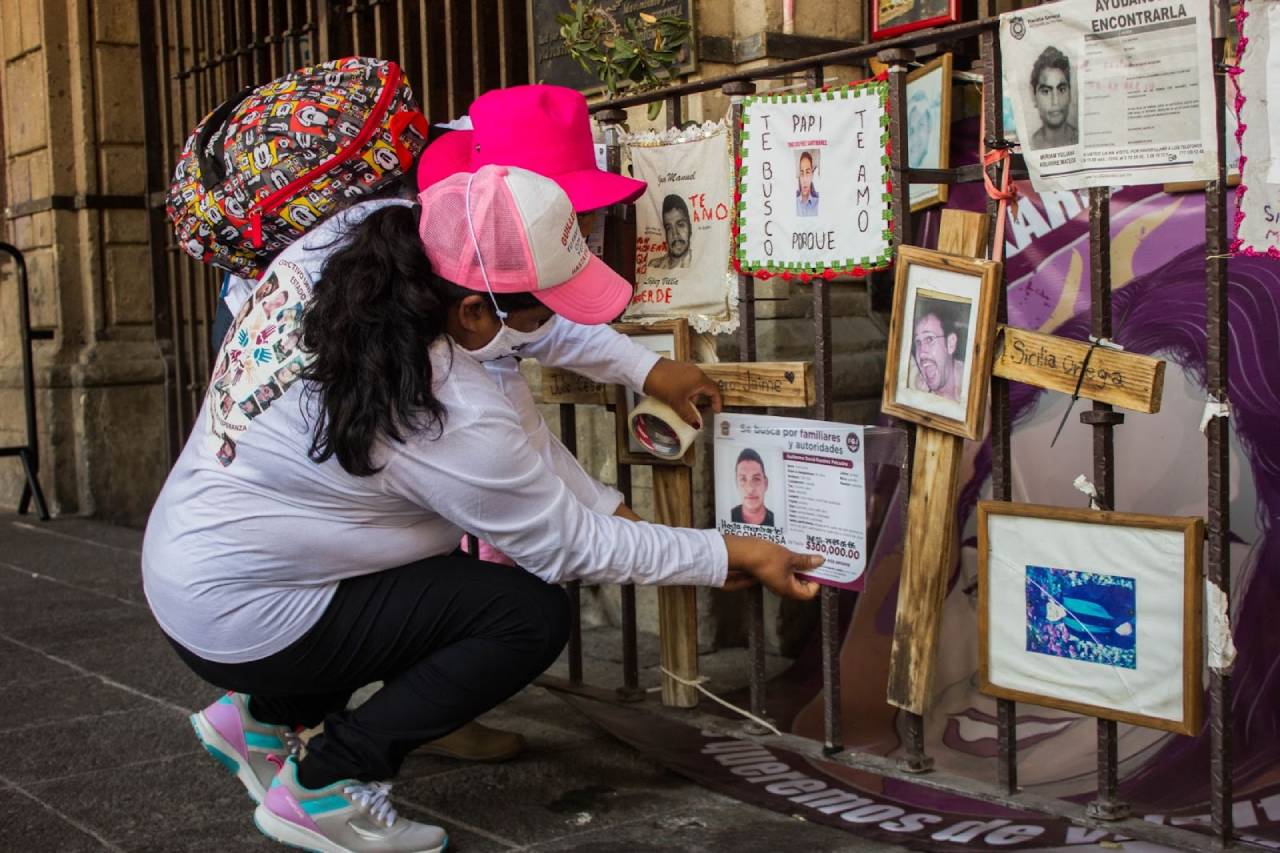
The first week of searches ends in Tetelcingo, the place where, years ago, it was discovered that personnel at the state prosecutor’s office dug clandestine graves to dispose of dozens of bodies.
Tetelcingo is a small town entrapped in urban sprawl. It looks as if it is a remote, rural location, but it’s not. It is practically part of the city of Cuaútla.
Searchers walk in a procession and mass is held. It’s their way of cleansing the community where, years ago, connections between the state prosecution office and the clandestine graves were proven. The mother and aunt of Oliver Wenceslao found the graves where the government threw people away as if they were disposable objects.
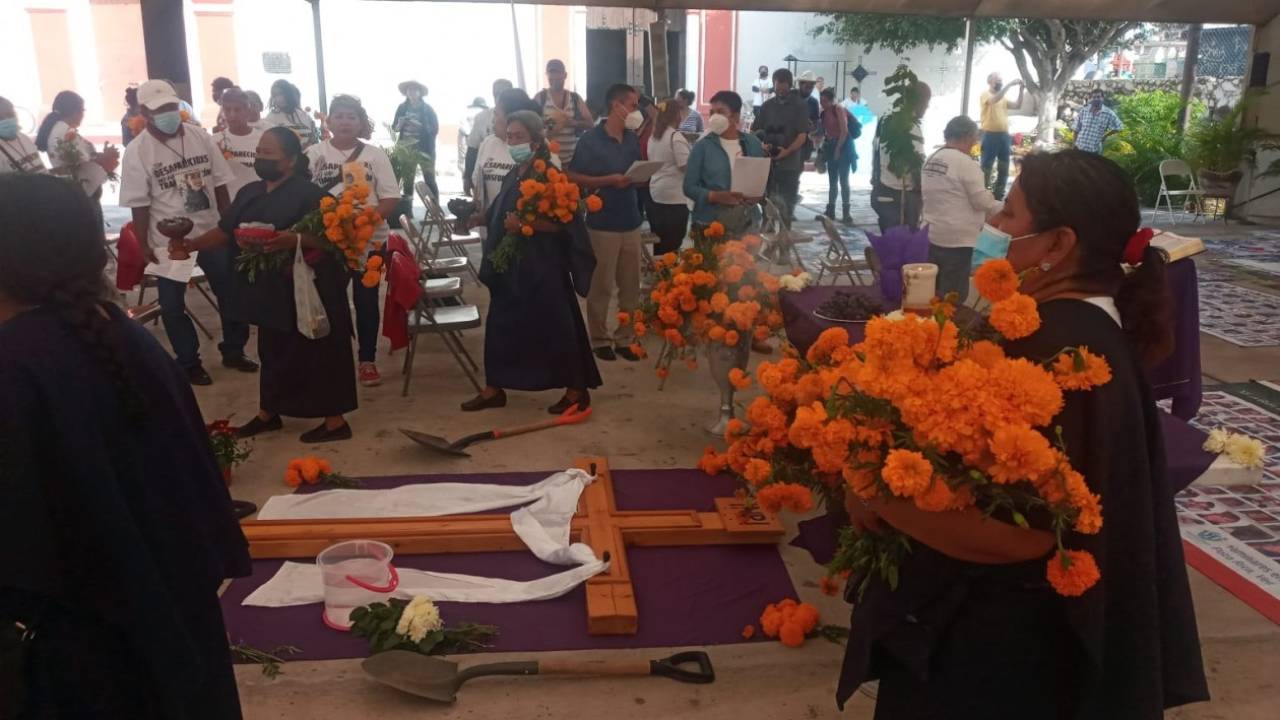
In this narrow strip of land, families light candles and lay cempasúchil flowers. They pray, cry, share with and hug one another. More hugs. It’s their way of pacifying this place so that it’s no longer a space of terror.
***
We’re on our way to Amacuzac, some 85 kilometers from Cuernavaca. The highway is surrounded by mountains. The landscape weighs on us.
«I wish telescopes didn’t just look at the sky. I wish they could look through the earth to be able to find them (…) it would be like sweeping over the plains,» says one searching mother in Patricio Guzmán’s documentary Nostálgia de la Luz (Nostalgia of Light). The same woman returns again and again to Chile’s Atacama desert, which hosts one of the most important astronomical observatories in the world, to look for her missing son.
Here in Morelos, in central Mexico, mothers search the mountains. Just like in Chile, people in the north of México comb the desert. In places like Veracruz, they search in the jungle.
A public servant from the local search commission says that she wishes there was some instrument that could X-ray the mountains to find hidden graves.
***
Five family members and volunteers go to Colegio de Bachilleres, a local school, to speak to students about disappearance; this is another activity performed by the Brigade. Their aim is to sensitize and inform the public about what happens when a person disappears. There are just four students and two teachers. In prior search brigades, when the pandemic still hadn’t broken out, these discussions were held with dozens of students, according to Andrés Hirsch, the coordinator of this activity.
Andrés asks a student to stand up and join one of the women from the brigade. His seat is left empty, and he asks, «What is absence? How do we start searching?»
In Amacuzac, hundreds of miles from his home, Juan tries to explain that his sister Viviana Elizabeth Garrido Ibarra disappeared in Mexico City in November 2018. He can’t speak; retelling the story is too much for him. Catalina Ulloa comes in with an opportune hug; the hug of a searching mother.
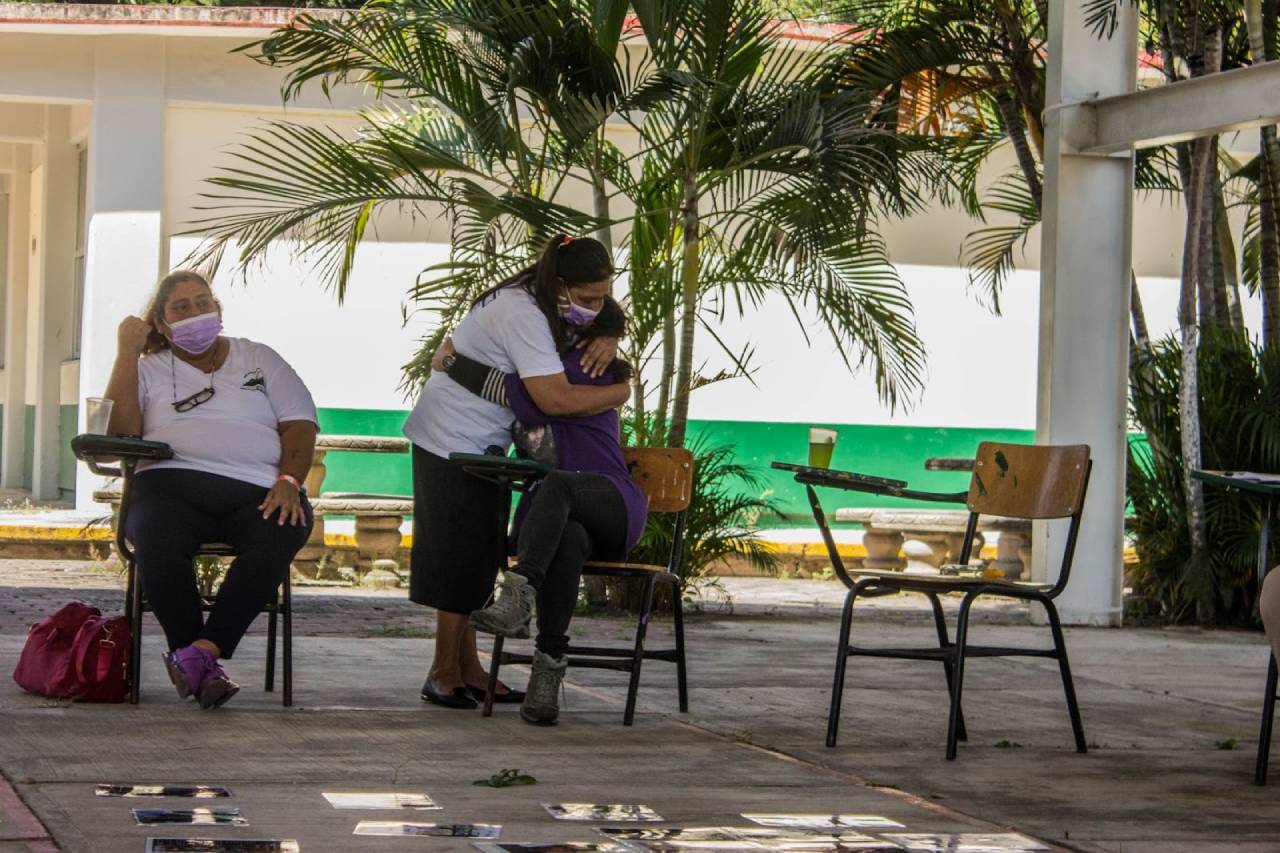
***
Land searches are normally carried out via convoys, but it’s complicated. Officers from the National Guard drive up front. They go fast, it seems like they don’t care to wait for everyone else. They arrive at the massive stretch of land where they’ll do the search. It’s close to new housing subdivisions on the edge of the highway.
Graciela and her daughter arrive, and they are asked who they’re looking for. The woman has been searching for her son, who disappeared while traveling from the State of Mexico to Jalisco, for years. She’s done all of the searching herself. After a group hug that day, she decided to join the brigade. She’ll never search alone again.
***
The brigade arrived in the town of Yecapixtla at 9:30am, where they’ll carry out the search. The area is surrounded by endless sorghum fields and numerous houses under construction. State police officers restrict passage for hours at a time. Some women searchers make the wait more bearable by braiding each others’ hair and picking flowers to decorate the plaits.
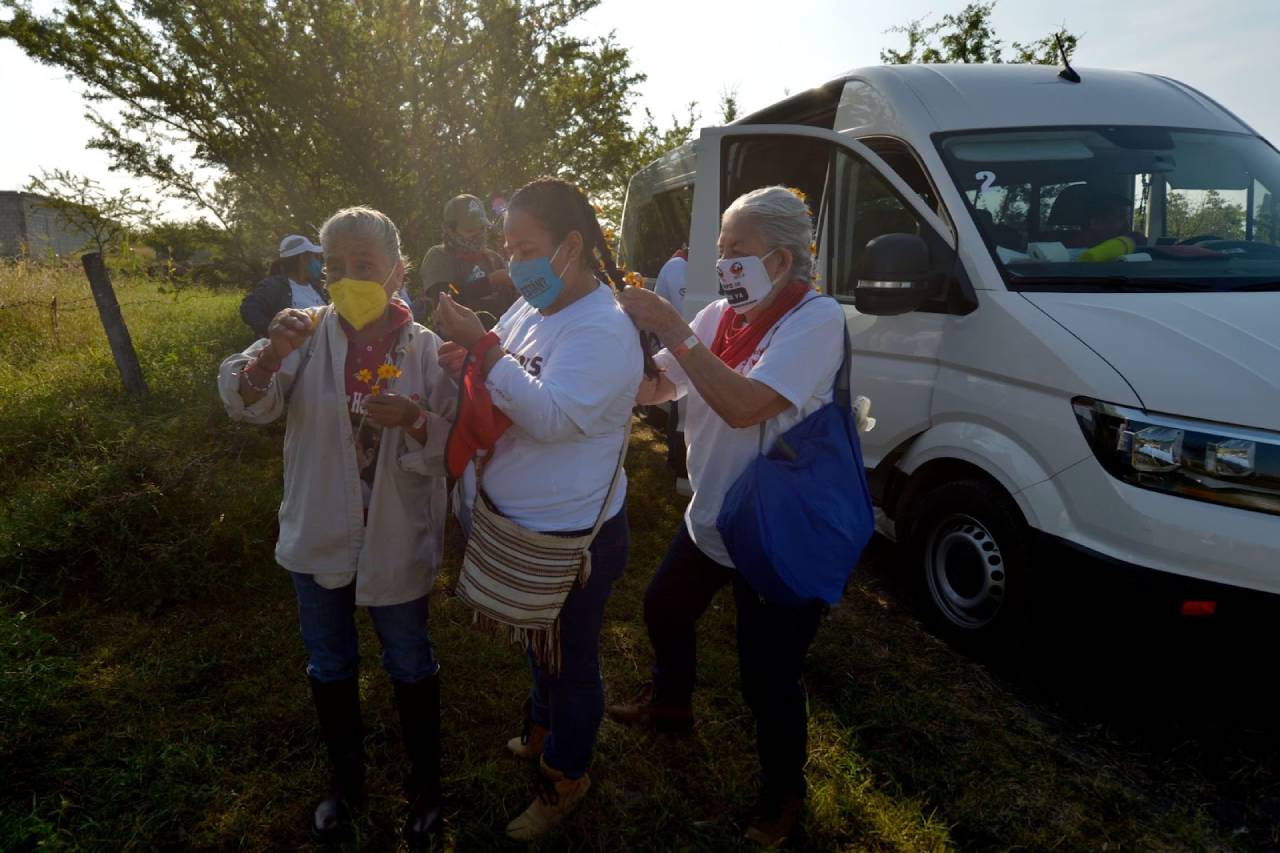
When they finally access the area, which used to be a sand mine, it takes practically no time at all to find evidence that it once served as an extermination site. Around noon, three bones are found in a hole around 80 centimeters deep; they’re the first of many. It’s the fourth finding in this clandestine burial site, and the fifth that the brigade has found overall.
Unlike the first findings, where picks, shovels and hands proved useful, other findings on the opposite side of the land required a backhoe to dig ditches up to three meters deep.
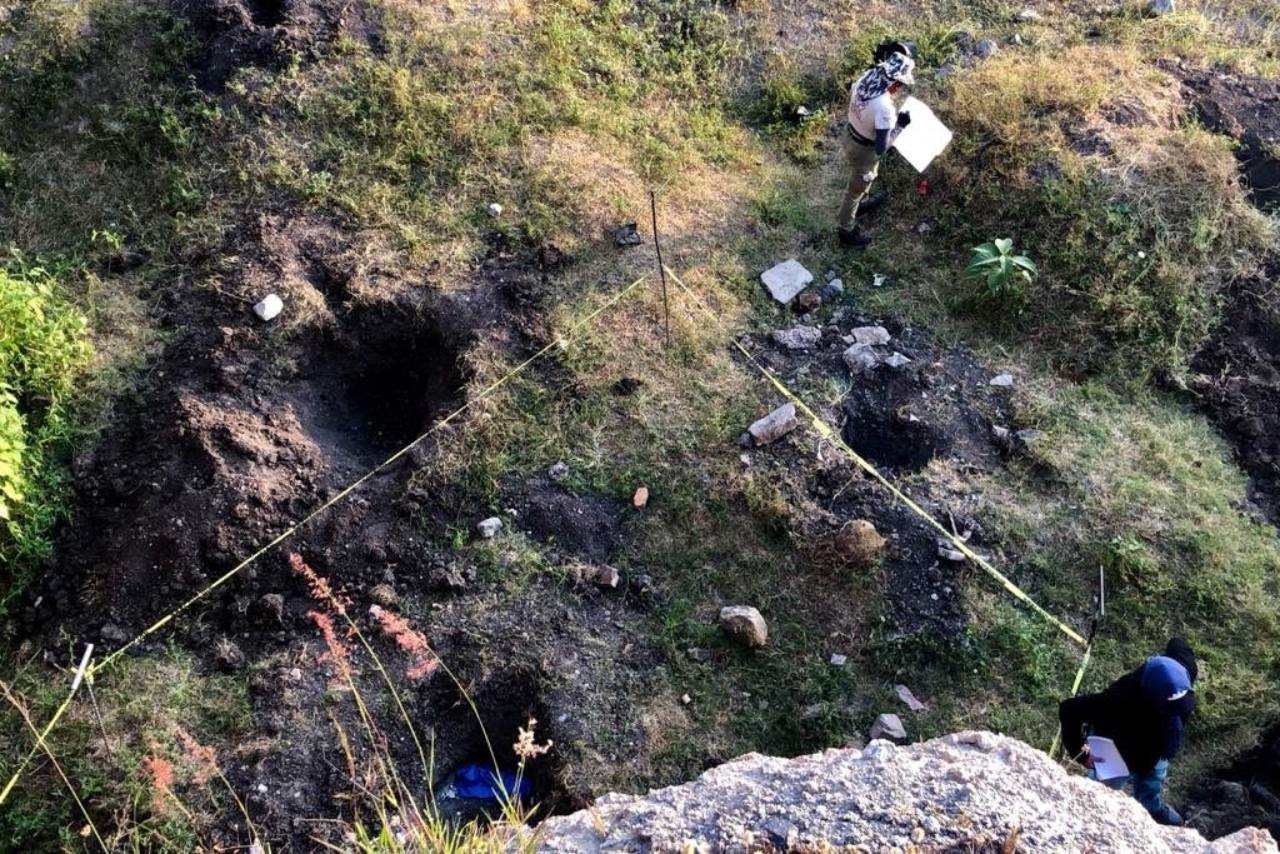
Searchers visited the same place two days prior, but found nothing. An anonymous source advised them to dig deeper. After finding the first remains, the families join together in prayer. Some of them put together an offering with branches and yellow flowers.
At 2:30 pm, nine people arrive at the Morelos state prosecutor’s office and the office of Alejandro Cornejo, a district attorney who specializes in disappearances. Because they’re not wearing gloves– maybe the most important tool to carry out an exhumation– they have to send someone to buy them. Once again, they wait.
When the brigade confirms a finding, specifically bone remains, it’s up to the Forensic Medical Services department to do the exhumation. At this point, authorities have to be reminded that the families have the right to be present for the exhumation.
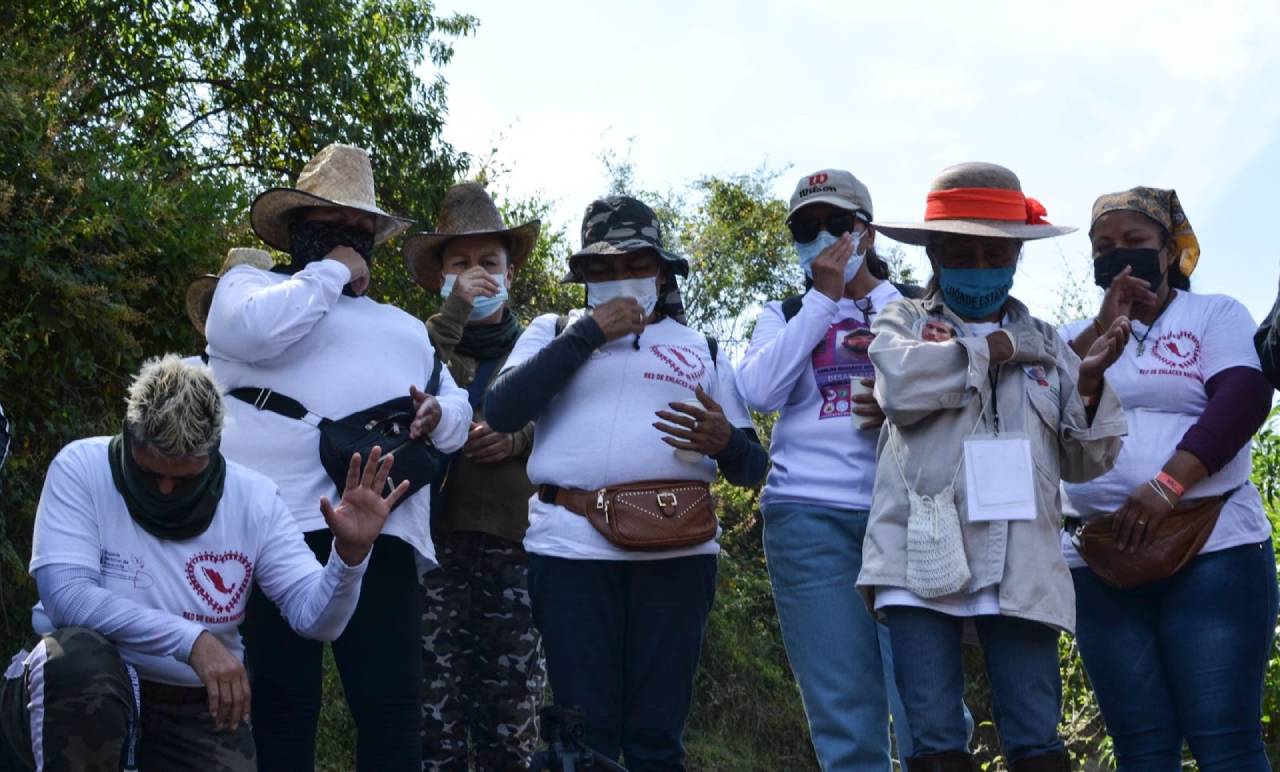
Before the end of the day, a group of women find a safehouse towards the edge of the property. There, they find more skeletal remains. Supposedly, personnel from the state prosecutor’s office claimed to have checked the safehouse weeks before.
***
Today, searchers are going to visit a prison in Jojutla. They can’t wear earrings, shoelaces or bring cell phones inside. They can’t wear beige or yellow clothing either. Women searchers enter only with photos of their missing loved ones and notepads to write down any possible leads.
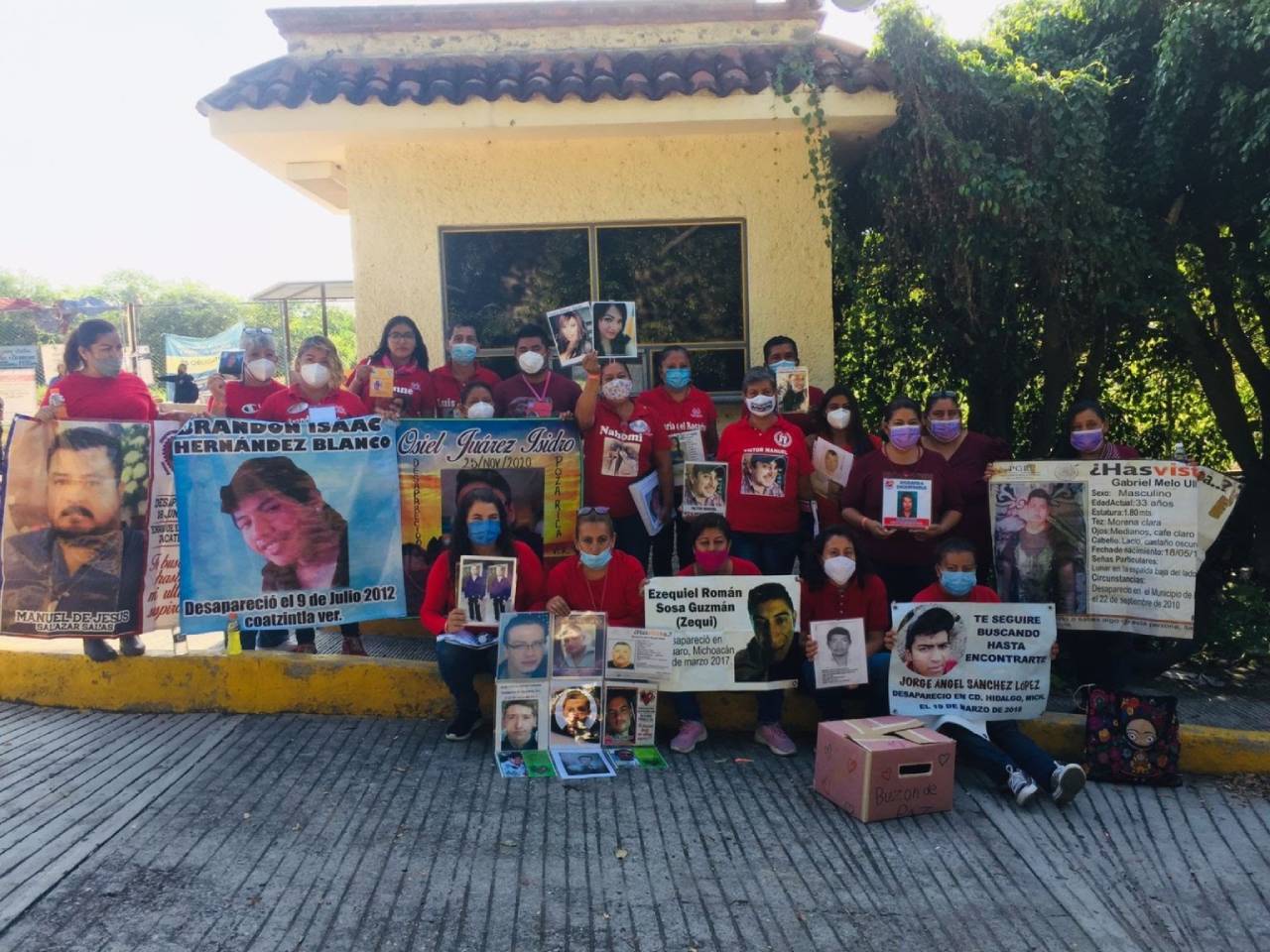
Inmates approach them to look at the photos and banners that they’ve laid on the floor. They walk by quickly in small groups. The mothers use a microphone and a speaker that doesn’t work, asking if anyone has any information about their loved ones, that they please share it with them.
The outing leaves them feeling powerless. Prison authorities don’t allow them to build sufficient rapport with inmates to be able to obtain any information.
***
The municipality of Jojutla became well-known in 2017 when clandestine burial sites were found there. It was revealed that those who dug into the earth to hide bodies were public servants of the state government.
It’s been years, but the indifference remains. After an hour-long wait, police finally arrive in the auditorium, which still smells new. They look tired. They listen to the women searchers’ stories with little interest. Some of the searchers say it loud and clear: their kids were disappeared by municipal police. What do families feel, what do they think, when they see police officers speechless upon being questioned?
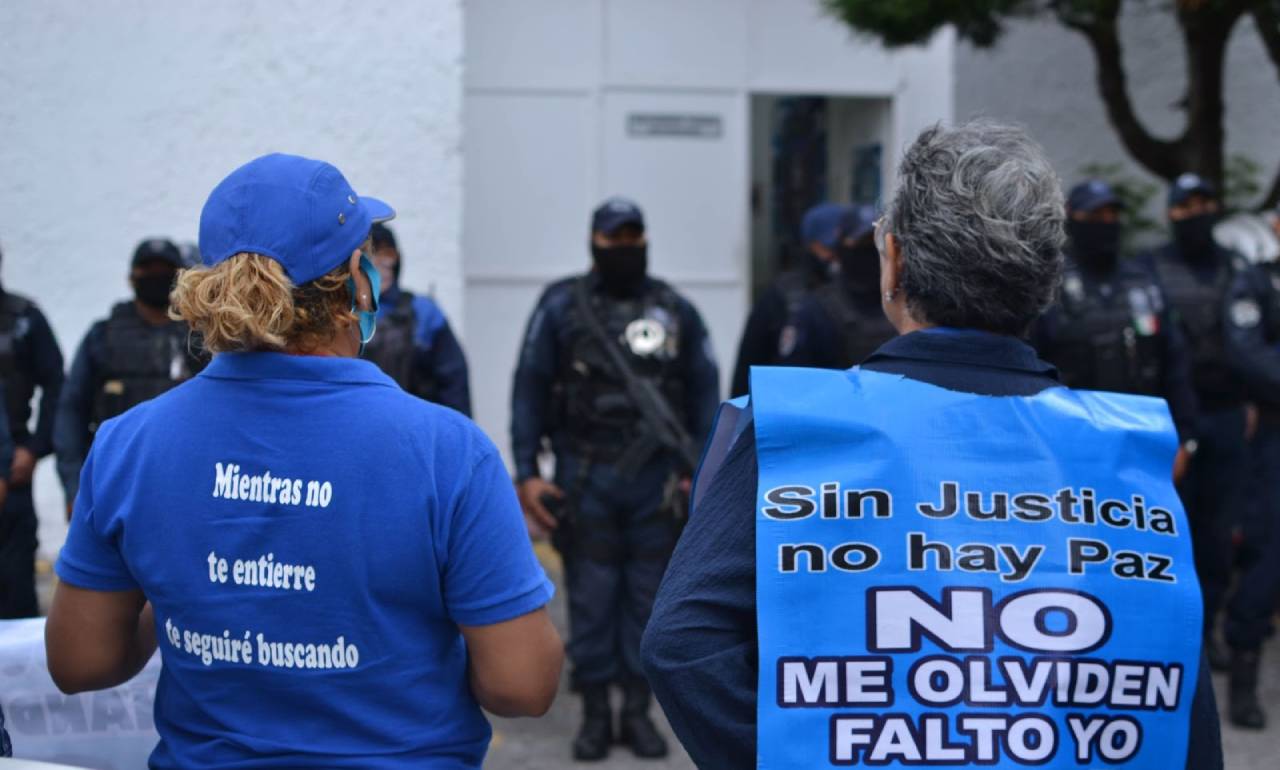
Alicia Gallegos, Natán’s mother, is originally from Poza Rica, Veracruz. She’s been searching for her son for three years. She ends her story with a lament that could move even the most stoic person: «Come back, Natán, I don’t want to walk without you!»
However, the officers remain as still as statues.
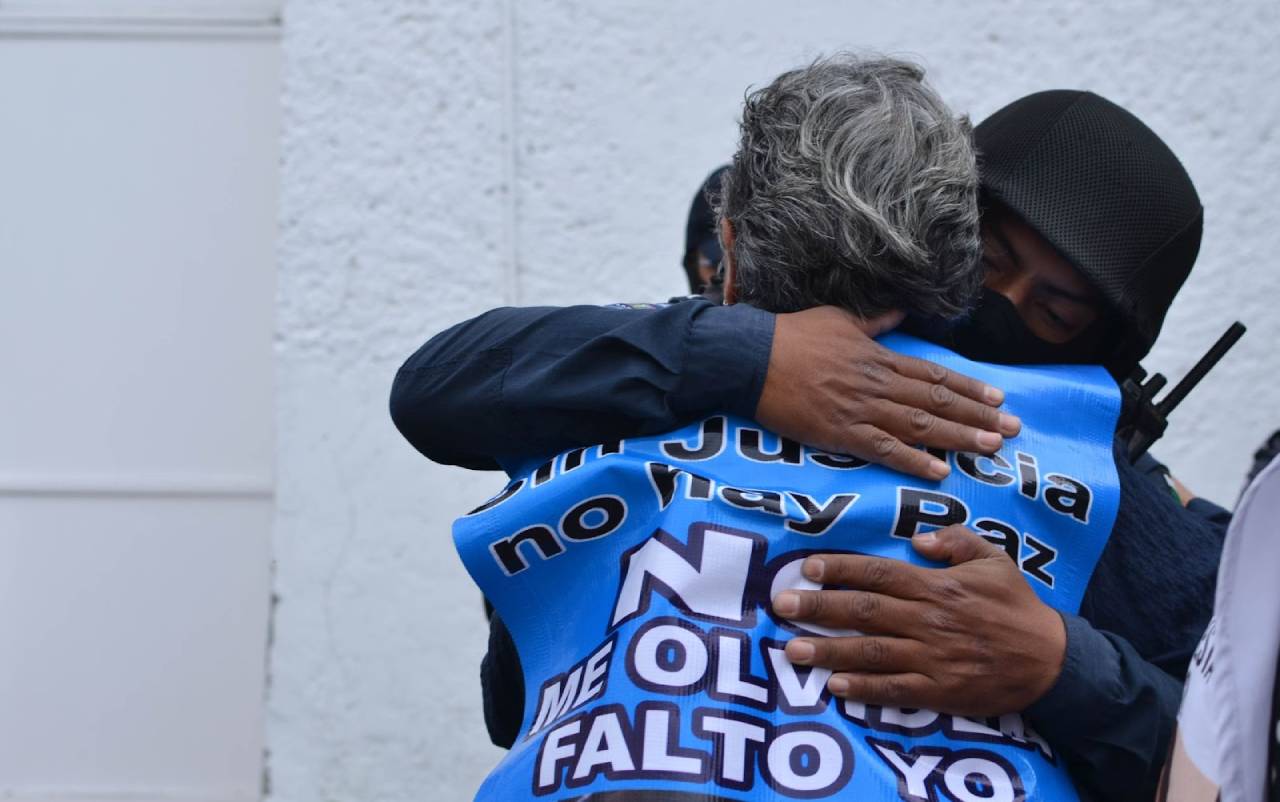
A week later, the same thing happened in Cuernavaca. Alicia once again recounts everything she knows about the disappearance of her son. She talks about how personnel from the Special Anti-Kidnapping Unit of Veracruz chose not to come with her to pay Natán’s ransom. The almost thirty police officers listening can barely look her in the eye.
It’s hard to tell if police are truly committed to the search for the disappeared, as they whisper to the mothers in their ears, but it’s certain that they won’t forget the cry of a mother fighting for her child to not be forgotten.
***
At Morelos’ prosecution office in Cuernavaca, some thirty family members meet in the small auditorium that feels more like a hell: every three minutes, a photo of a body or of human remains is projected on the screen. Some of the photos are accompanied by additional information.
Age: 16-18 years
Small white bra with a heart pattern and the word LOVE.
Cause of death: Undetermined.
Markings or tattoos: Tattoo of Santa Muerte and the devil linking arms.
Family members ask them to reduce the time to a minute, and for them to omit pictures of fetuses and newborns.
Healed fracture on the second rib.
Ballcap with the Chicago White Sox logo.
The parade of death continues for days. Hundreds and hundreds of information sheets are shown, including disfigured faces with evidence of torture, skeletons, and sheets without photos and sufficient information for a person to be able to recognize their family member.
No one can use their phone. The searchers have to write everything down with paper and pen, and they have to do it in almost-darkness, lit only by the light of the screen.
Members of the brigade look at 700 sheets in total of people that mostly remain unidentified. Five hundred of them are already buried in the municipal cemetery of Cuaútla.
***
It’s the last day of the brigade. The music, dance, and laughter of the small party organized for the families ends with closure and thanks. There are some that can’t sleep, and stay up talking at the entrance of the hotel. The mother of a young woman who disappeared seven years ago says that she’s tried to pack her things several times, but she just can’t.
A search brigade can’t be summed up in the number of human remains found nor in the progress made with authorities. The mutual understandings and relationships built day by day are just as important, and these almost always begin with the same question: «Who are you looking for?»
They find themselves in the search. Their stories contain elements that resonate with the rest. For some people, it may be the first time that they’ve been listened to without interruptions or questioning stares. The brigade is a safe space, one of trust; a space to come together, to learn, and to know that they don’t have to walk alone in their search.
***
*Aranzazú Ayala (@aranhera), Efraín Tzuc (@efra_tzuc), Lucía Flores (@lu_fm) and Marcos Nucamendo (@makonucamendi) are part of the A dónde van los desaparecidos (Where Do the Disappeared Go?) project. A dónde van los desaparecidos is an investigative and commemorative site about the dynamics of disappearance in Mexico.
Click here to sign up for Pie de Página’s bi-weekly English newsletter.
Ayúdanos a sostener un periodismo ético y responsable, que sirva para construir mejores sociedades. Patrocina una historia y forma parte de nuestra comunidad.
Dona

